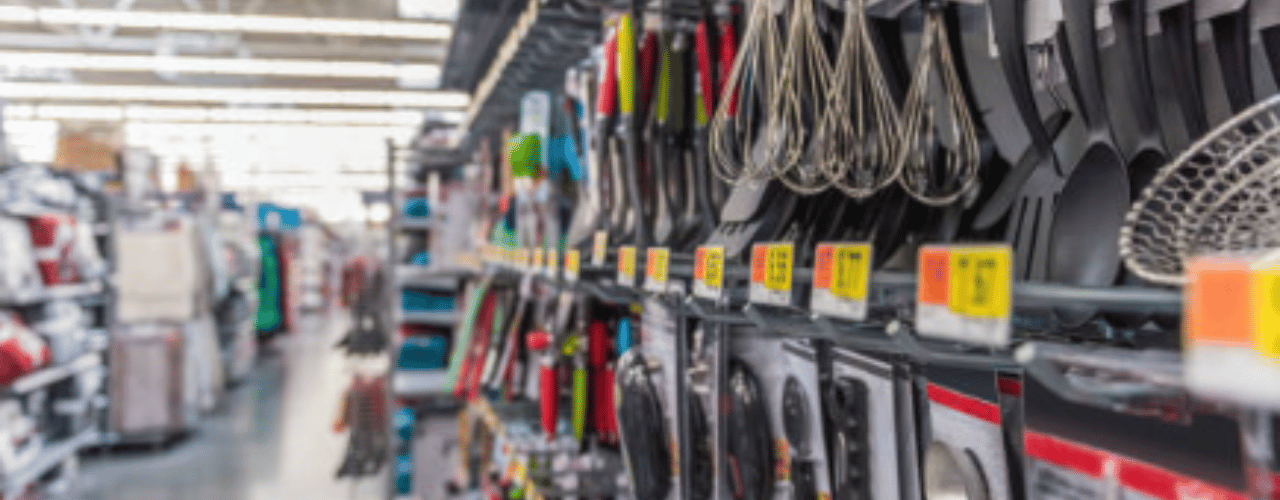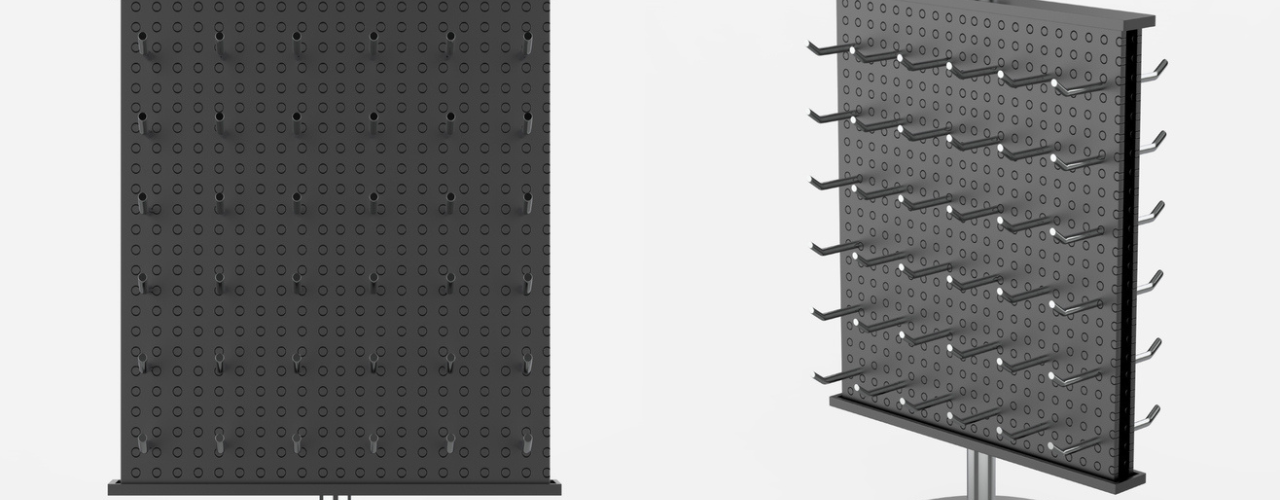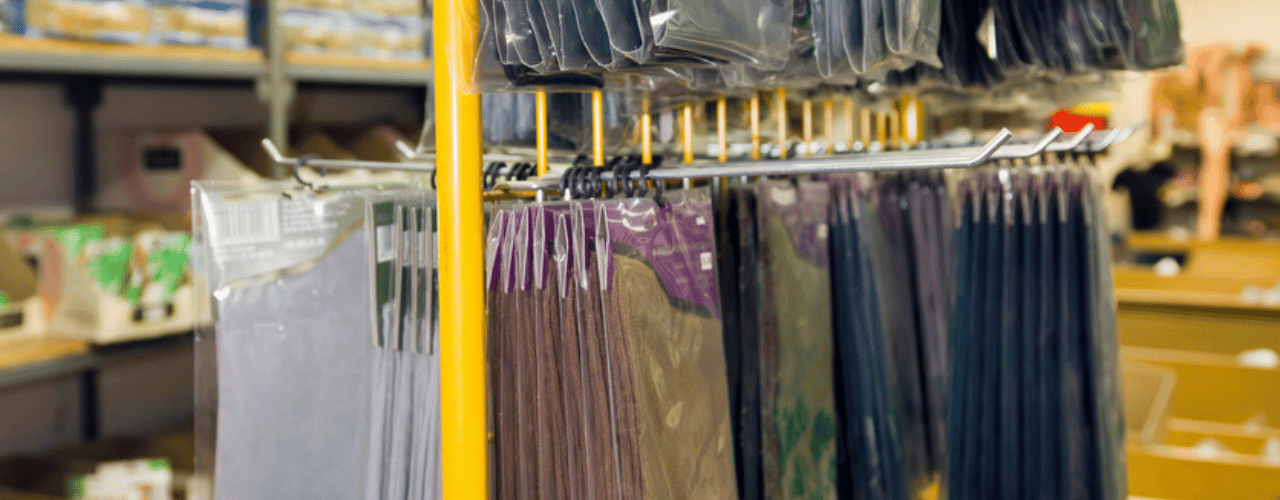In retail, every square metre of floor and wall space matters. The way products are displayed can make the difference between a store that feels inviting and easy to navigate, and one that leaves customers frustrated. Retail display hooks are one of the most practical tools for achieving this balance. They create tidy, accessible displays that highlight products while freeing up valuable space.
What Are Retail Display Hooks?
These fixtures are designed to present products on pegboards, slatwalls, gridwalls, or other display systems. They are available in different shapes and sizes, making them suitable for a variety of stock. Adaptability is their main strength, as shop owners can select and combine styles to suit the exact requirements of their layout. This makes them an important part of keeping stores organised and products within easy reach.
Why Display Hooks Are Essential in Retail
Fixtures like these do far more than keep products in line. They influence how customers interact with items, how staff manage stock, and how professional a store appears. Using wall space leaves counters and floors clear. Items displayed upright are easier to browse, and staff can quickly identify which lines need replenishing. Layouts can change as ranges evolve, and a tidy presentation gives shoppers a positive impression of the store. For many retailers, these details influence sales and brand perception.
How do Retail Display Hooks Support Sales Growth?
The positioning and choice of display hooks can directly influence sales. Strategies include:
- Eye-level placement: placing popular products at eye level draws attention
- Impulse areas: positioning hooks near tills encourages spontaneous buys
- Cross-selling opportunities: grouping related products together increases related purchases
- Stock depth: using longer hooks holds multiple items and avoids empty spaces
Planning layouts with care allows retailers to use hooks as sales drivers rather than just storage solutions.
Types of Display Systems for Hooks
These fixtures can be paired with different support systems, each suited to particular layouts. Retail display hooks are commonly seen on pegboards, which offer quick changes and are familiar in hardware or craft stores. Slatwalls provide stronger support and accept a range of accessories, which suits clothing and electronics. Gridwalls use modular metal panels that can be moved or expanded when needed, helpful for pop-ups and exhibitions. The best fit depends on product mix and the amount of wall space available.
What Problems do Retailers Face with Hooks?
Misuse undermines even well-made fixtures. Overloading a single arm makes items hard to browse and risks damage. Using lightweight hooks for heavy products often leads to bent fittings. Crowded layouts confuse shoppers, while stale displays give the impression of poor stock control. Addressing these issues keeps presentations clear, safe, and appealing.
How Display Hooks Improve Customer Experience
Customer satisfaction is directly linked to store layout. Well-organised hook displays support a positive shopping experience by:
- Making products easy to find and compare
- Reducing clutter that can frustrate customers
- Creating clear sections that guide browsing
- Improving accessibility for customers of different heights and abilities
A good customer experience boosts immediate sales, encouraging repeat visits.
What Makes Retail Hooks Suitable for Heavy Use?
Shops need fittings that stand up to repeated handling. Solid construction preserves shape over time, reducing callouts and replacements. Reliable performance also supports safer presentations, protecting both products and customers, while staff can focus on service instead of repairs.
How Can Retailers Show Their Green Credentials?
A considered display plan supports sustainability goals. Retail display hooks used within reusable systems such as pegboards and slatwalls cut down on single-use fixtures, and many metal components can be recycled at the end of their life. Choosing products that are built to last also reduces waste.
What Are the Best Ways to Use Hooks?
Good results start with matching hook type and length to the product, then grouping similar items so customers can compare at a glance. Displays should be kept topped up, with clear signage used to direct shoppers to categories or offers. Reviewing layouts regularly ensures they reflect what the sales data shows.
Where Else Can Hooks be Useful?
Although often linked to retail, these fixtures are also used in other environments:
- Trade fairs: presenting products to potential clients
- Workshops: storing tools and equipment in a tidy, accessible way
- Educational spaces: displaying teaching aids and student work
- Home use: keeping garages, sheds, and utility rooms organised
This versatility makes them a worthwhile investment for any setting where organisation and presentation matter.
How Can Retail Display Hooks Benefit Your Store?
Effective hook use helps shops create attractive layout and support a smoother customer journey. Planning strategically can transform displays into valuable sales tools.
How do They Improve Staff Productivity?
Clear displays make day-to-day work easier for employees. Staff spend less time searching for stock or rearranging products, which reduces wasted effort and frees them to focus on serving customers. Restocking also becomes quicker, as gaps on the display are easier to spot and refill.
What Role do Hooks Play in Shopper Psychology?
The way items are presented has a strong impact on how people buy. Well-planned displays create a sense of professionalism that builds trust in a brand. Retail display hooks play a role here too, drawing attention to featured items and guiding shoppers towards making a purchase.
Can Hooks Work Alongside Technology?
Some retailers now integrate traditional fixtures with digital tools. Displays can be combined with signage screens or monitored through analytics systems that track shopper interactions. This helps managers understand what attracts attention and how customers move through the store.
Do They Offer Cost Saving Benefits?
Thought out layouts also reduce waste. Products stored securely on hooks are less likely to be damaged, and clearer organisation means fewer items are misplaced or overlooked during stock counts. These savings add up, supporting the financial health of the business.
Want advice tailored to your store? Contact Foxbarn today to speak with our team about retail display hooks and how they can improve your store layout.


